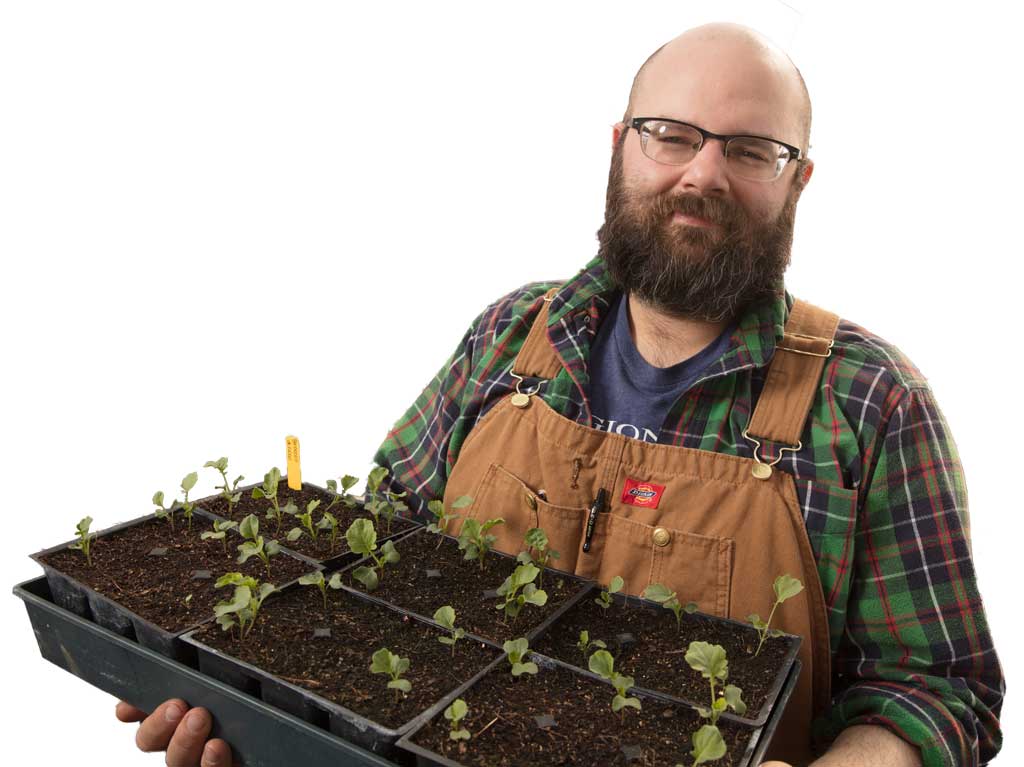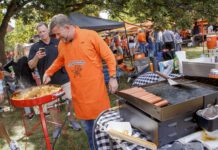
[dropcap]Community[/dropcap] gardens can take on many forms, ranging in size and complexity from intricate large scale networks all the way down to a simple shared space between neighbors. Large or small, the impact tends to stretch beyond just a harvest to eat.
“Gardening provides so many avenues for nourishing some very essential needs of the body and the mind. It helps us get exercise, sunshine, living foods and the joy of accomplishing something together,” says Tyler Black, garden manager with the pH Community Garden in the Crosbie Heights neighborhood in Tulsa. “Community gardening nurtures and strengthens our collective awareness of the relationships which structure the natural world, as well as our own lives.”
For Tulsa’s Brady Heights Historic District, community gardening grew out of an abandoned lot and the desire to create relationships within the neighborhood.
“We have seen so many amazing returns on our investment we didn’t even consider. The garden has helped unify and turn around our neighborhood,” says Nathan Pickard, a member of the Brady Heights Historic District board of directors. “It is now a community space where we do monthly movie nights, plant swaps and barbecues.”
Over the past decade, the Brady Heights garden has grown beyond the borders of that abandoned lot, moving into the Tisdale Food Forest and even Emerson Elementary, the neighborhood’s school.
[pullquote]
For the Community Gardener
Start small with high value crops like radishes, lettuce, sweet potatoes, garlic or onions to help you fine tune your skills.
Don’t overlook cool weather gardens in the spring and fall.
Experiment with beneficial plant relationships and companion planting.
Learn how to compost.
Consider going vertical to make the most of your space.
Invest in perennials like fruit trees and berry bushes because they tend to require less maintenance than annuals.
Have a problem? Call your local county extension office.
[/pullquote]The success of community gardens across our state has led Oklahomans to join together to work for benefits beyond their own neighborhoods. The Regional Food Bank of Oklahoma supports a network of charitable community gardens growing food for those in need.
“As a hunger relief organization, we often see people who don’t have a positive relationship with fresh fruits and vegetables,” says Mason Weaver, director of Urban Harvest at the Regional Food Bank in Oklahoma City. “In the store, fruits and vegetables tend to be more expensive per calorie than packaged items and aren’t as often available.
“It can be a risk to prepare new fruits and vegetables. Community gardens help change that experience by increasing access to healthy foods. Gardening also provides an intellectual and emotional experience with your food.”
Community gardens have shown they are capable of providing benefits both diverse and, in many cases, sustainable. The recently rejuvenated Crosbie Heights garden group is prepping the soil once again for another harvest.
“The pH Community Garden has developed under various guises since at least 2010 and has most recently come alive once again this past year,” Black says. “We are able to access our cumulative hours and what did and did not work.”
As with anything worthwhile in life, community gardens only thrive with hard work and dedication as well as a few other essential ingredients: knowledge, space, permission, water and manpower.
“Successful gardens are almost always in a community space with easy access and have a committed core of volunteers to be the driving force to provide guidance and labor,” Weaver says. “Over the years, I have seen dozens of community gardens come and go. The lasting gardens change things up and slowly grow the endeavor over years.”
There are a host of nonprofit and community organizations eager to help community gardens thrive. Urban Harvest, for example, provides seeds and plants to gardens willing to donate a portion of their harvest. Organizations like Up With Trees, of which Pickard is a board member, offers education classes.
“Local county extension offices have staff to help the community with soil testing and [horticultural] guidance,” Weaver says.
As Black can attest, success comes from learning as you grow.
“Experimentation is part of what a garden is all about. Play with different methods,” he says. “This coming year we expect to see a literal tenfold increase in successful food production based on the lessons learned. We each know what it takes now.”
























